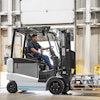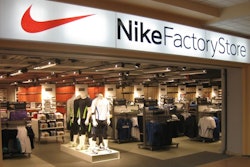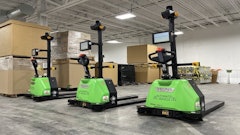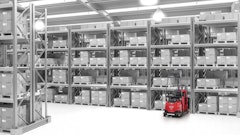
As developing markets continue to dominate the mindshare of manufacturing executives, how to profitably service those markets has become the mission for supply chain executives. Evolving existing supply chains is the fastest way but often the result forces the supply chain into an unnatural shape.
A typical example is a manufacturer that had its roots in Detroit. In the 1960s, it sourced all components in the United States, built final products in the U.S. and shipped primarily to U.S. and western European markets. In later decades, they followed the industry trends to introduce lower costs into the supply chain and began sourcing some key components in China, assembled final goods in Brazil and continued selling primarily into the U.S. and western Europe.
Today, this same company continues to source components in China, final assemblies are done in Brazil but the end customer markets have changed. Although the U.S. and Europe continue to be target markets, the fastest growing market is in China. So the product starts in China, ships halfway around the world to Brazil and then is returned to China for commercial sales. A supply chain that requires complete circumnavigation of the globe is probably not an efficient one.
Emerging markets will be the driving force changing the shape of supply chains for the foreseeable future. As western markets suffer through various economic downturns, the growth markets are in the developing world. Nearly every manufacturer that we speak to depends on emerging markets for growth. Simultaneously they mention the need for nearsourcing, best described as manufacturing goods in the same market that you sell them. Usually the reason cited for nearsourcing is the rising cost of labor in Asian markets, particularly China. Our supply chain data shows that is only one of the reasons and not the strongest one. Looking at the most successful supply chains globally, we have found four reasons why nearsourcing separates efficient, profitable supply chains from their counterparts.
- Rising labor costs in Asia, especially China. When asked about nearsourcing, most companies cite rising labor costs in China. For decades, companies have been offshoring the production of manufacturing components to Asia because of the vast difference in labor costs of the two countries. Today this practice is being increasingly scrutinized, largely because the cost of labor is growing much faster in China than in America and other western markets.
- Total cost to serve metrics. Rising labor cost is just one of the cost metrics that companies evaluate when selecting manufacturing sources. Many companies tend to myopically focus on piece part price when selecting a component source, which is no longer industry best practice. So many other costs figure into the total cost to deliver a product from one market into another. Often border crossings involve an accumulation of agent fees, consolidation/deconsolidation, drayage and other fees that need to be accounted and accumulated into total cost to serve. We have seen these unplanned fees accumulate into miscellaneous buckets that are never managed at an SKU level. Instead, an estimated landed cost rate is applied across all SKUs moving through a region. In recent years, manufacturers have begun scrutinizing these fees and, in many cases, have been astounded at the percentage of freight spend that is spent on landed costs. Nearsourcing removes all of those expenses and the fees are more predictable.
- Shorter supply lead times. Sourcing supply in the same markets that the final goods will be sold decreases the overall product lead time significantly. The trick isn’t how much of supply is locally sourced but rather how much of the critical path supply is nearsourced. Critical path items are those items that impact the overall lead time of a product. Supply chain leaders that we’ve spoken with have come up with new best-in-class ways to determine how long a lead time is tolerable and what percentage lead time the “long pole” critical path item can occupy. The longer the lead time, the more risk is associated with that item. To reduce overall availability risk, nearsourcing is selected as primary supplier with alternates sources potentially in other markets.
- Customer service. It used to be that emerging markets accepted second-class customer service levels. Last year’s products and long lead times were the norm. Market-specific product features were not considered to be an option. With the Internet being widely available, potential customers research products and they demand up-to-date features and service, including faster lead times. As more companies do business in global markets, competition can be fierce. Price, product features and time to market are all key components that consumers evaluate when deciding which product to buy. Mass customization, or producing products customized for a specific market, is the way that many companies have to compete. Nearsourcing is a valuable option. Manufacturing a product locally to service a local market has many advantages. For example, we’ve seen many companies execute postponement strategies to bring a base product into a region and then final market customizations can occur in-market.
Nearshoring is a fast-growing trend. But there are some hidden effects that it can exacerbate. Developing markets do not come readily equipped with well-established financially-stable suppliers. Supplier capacity constraints is one important issue. As manufacturers descend on promising new markets with high hopes of commercialization, the first thing they need to do is find manufacturing capacity. Building a plant takes a long time and is a risky venture in a new market. If the market doesn’t pay off, the company is stuck with a plant. Instead, companies prefer to try new markets by entering into a joint venture agreement with an existing company or by contracting with an existing manufacturer to build products. As many companies enter into a market simultaneously, existing manufacturing capacity is quickly consumed. We’ve already seen this in electronics manufacturing in Asia, for example. As capacity becomes constrained, suppliers can be choosy about which customers to serve.
It’s also important to assess supplier financial strength. When evaluating suppliers in new markets, financial stability is a key criteria. Many manufacturers have created new “supplier risk managers” to keep an eye on supplier performance and to find creative ways to help suppliers be successful. For example, supply chain financing is gaining popularity. Using a manufacturer’s credit rating to help suppliers get financing helps all parties in the supply chain.
Nearsourcing continues to be a best practice for global manufacturers. All the contributing factors have momentum to last for the foreseeable future, particularly customer-service metrics that continue to be highly competitive. Customers in all markets are fickle and demanding. Creating localized products in-market is key.
On a similar note, many manufacturers are returning operations to the U.S., an act commonly called reshoring. In some ways this is akin to nearshoring in the U.S., making products in the United States for United States customers. The U.S. has the capacity, trained resources and labor costs that have remained steady or actually declined in some markets. Along with all of the other reasons for nearshoring, we expect reshoring to continue.














![Pros To Know 2026 [color]](https://img.sdcexec.com/mindful/acbm/workspaces/default/uploads/2025/08/prostoknow-2026-color.mduFvhpgMk.png?ar=16%3A9&auto=format%2Ccompress&bg=fff&fill-color=fff&fit=fill&h=135&q=70&w=240)





